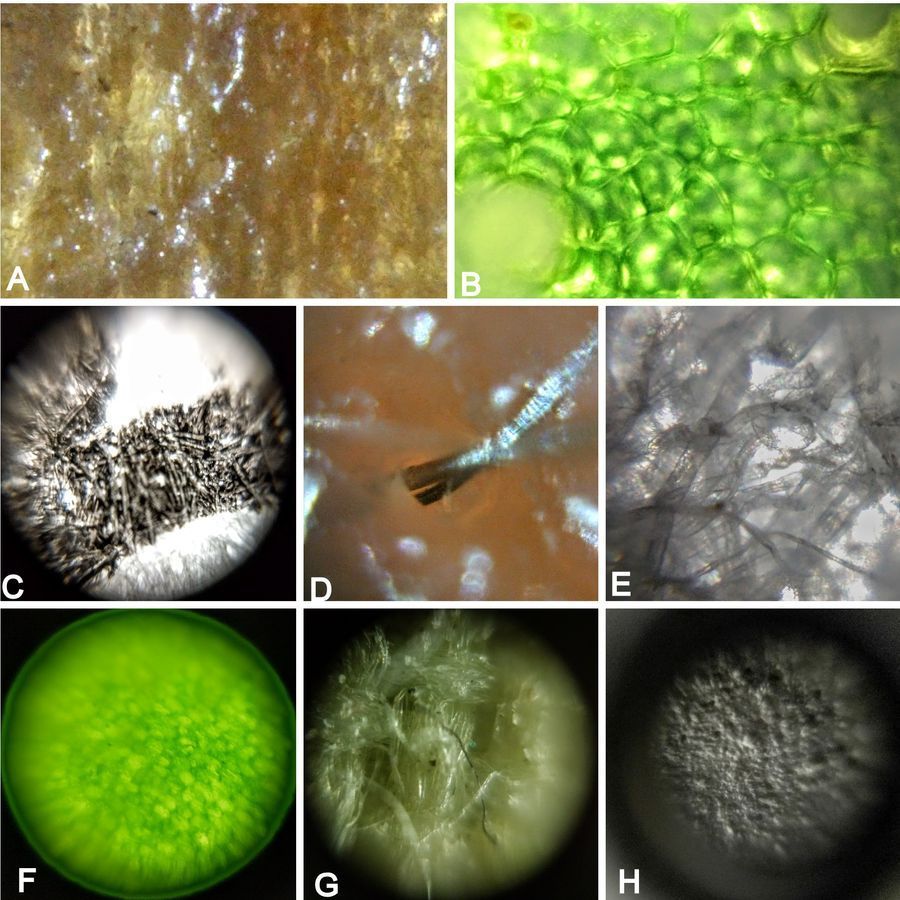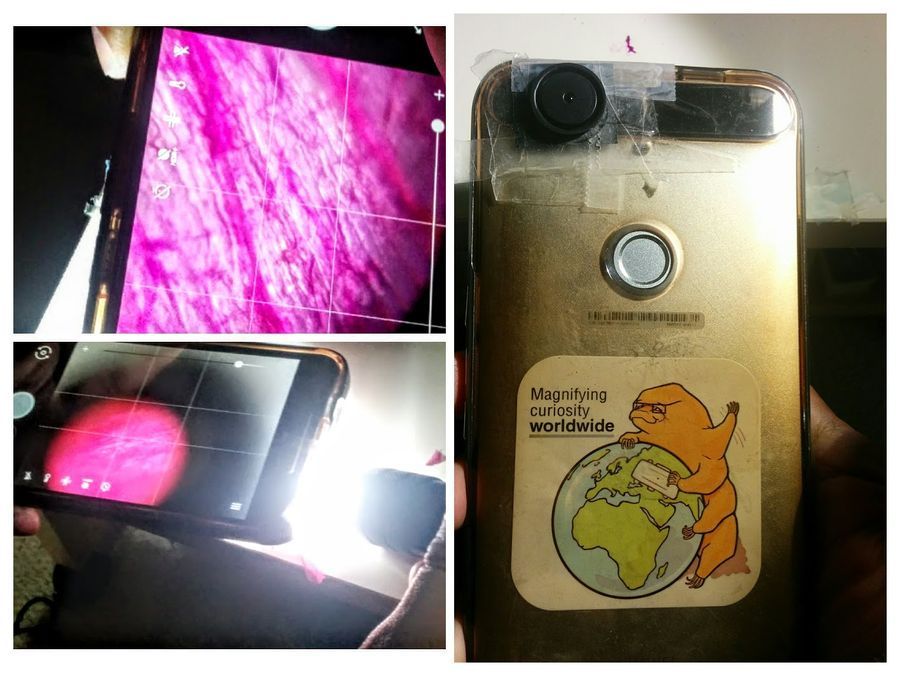Surfing surfaces
 Dec 10, 2017 • 5:49 PM UTC
Dec 10, 2017 • 5:49 PM UTC Unknown Location
Unknown Location 140x Magnification
140x Magnification Unknown
Unknown
laksiyer
Human observer of life. https://sukshmadarshin.wordpress.com
97posts
1255comments
5locations

Here is a hack with the new foldscope lens. Using a magnetic coupler and a lens, couple the two onto the phone’s camera-eye. This can be directly used to scan objects. For a reflecting light source, you can use the camera flashlight (if your app allows you to have the flashlight and the camera on simultaneously) or use a flashlight, which is what I used as in the picture below. The hack allows one to explore surfaces like nothing else, and it is tremendously addictive, although you need really steady hands. Here is how the hack looks.

Of the two lenses in my kit, one is in the foldscope properly coupled with stage etc, and the other is almost always attached to my camera as above. That way I can quickly scan interesting surfaces and then take samples in areas which interest me. With the above hack, I took some pictures below. Can you guess what they are? Look at the legend for answers.

A) Wood used on my staircase; can you see the thick varnish. B) African violet leaf, look at the stomata; C) print on paper, D) hair emerging from the root of my hand; E) Tissue paper, F) Surface of a succulent leaf, G) Artificial flower, H) Dry-wall Each of the above pictures has some aspect that pleases me to no end. I love B) where you can see the epidermis and the mesophyll cells from the “leaf-top”.
We had our first snow yesterday and snow flake melting videos are fun to do with the above hack. I have an idea of an elegant light design that can go with the hack and with the foldscope stage inspired by @MattB’s old foldscope post. Reflecting microscopy with the foldscope will soon be a breeze I suspect. Will describe when done.
We had our first snow yesterday and snow flake melting videos are fun to do with the above hack. I have an idea of an elegant light design that can go with the hack and with the foldscope stage inspired by @MattB’s old foldscope post. Reflecting microscopy with the foldscope will soon be a breeze I suspect. Will describe when done.
Sign in to commentNobody has commented yet... Share your thoughts with the author and start the discussion!

 0 Applause
0 Applause 0 Comments
0 Comments_300x300.jpeg)

















